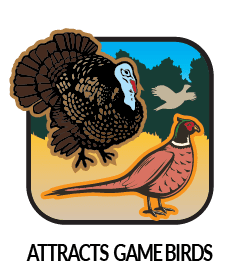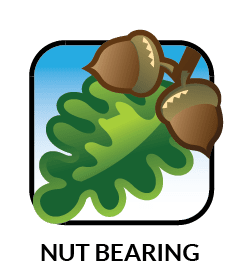Chinkapin Oak
Plant Type: Dormant, bare-root
Zones: 4-7
Soil Type: Clay, Loamy & Sandy Soils
Site Selection: Full Sun
Mature Height & Width: 40-70' Height and 50-70' Spread
Growth Rate: Moderate - 12-24" per year on average
Moisture Requirements: Average






Chinkapin Oak
Quercus muehlenbergii
This tree should be the top choice for your wildlife plot. Small, sweet acorns up are up to 1" in size, ripening in September and October. This is the preferred acorn of white tailed deer, squirrels, chipmunks, turkey and other birds and mammals. Wildlife will feed from the ground as well as from the tree. Chinkapin Oak are found on limestone outcrops and are tolerant of alkaline soils. They are somewhat drought tolerant once established. The branches and chestnut-like leaves form a round crown for the perfect shade tree. Plant groupings in large spaces or parks. Yellow leaves in autumn are a lovely contrast to the light gray scaly bark.
The Chinkapin Oak is also sometimes known as the Yellow Chestnut Oak or Rock Oak.
The Chinkapin Oak is a medium to large shade tree.This oak will grow on dry rocky slopes and along streambanks. Chinkapin Oak are found on limestone outcrops and are tolerant of alkaline soils. Once this tree matures, it will produce acorns that are enjoyed by many types of birds and wildlife.
Common uses for the Chinkapin Oak:
- Large stately tree for large spaces
- Best Oak tree for alkaline soils
- Firewood; has a very high heat value
- Strong lumber used in many types of projects
- Great wildlife value
The Chinkapin Oak provides good cover for a variety of birds and mammals. Young oaks with low branches serve as particularly good winter cover. The acorns serve as important food for the Red-Headed Woodpecker, Northern Bobwhite and Blue Jay. Other birds that feed on acorns include grouse, pheasants, turkeys, flickers, grackles, chickadees, nuthatches and ducks. Small mammals including mice, squirrels, voles and white tailed deer also enjoy feeding on the acorns. The acorns are an important food source for black bear. Beaver feed on the bark and twigs and porcupines consume the bark.





